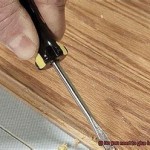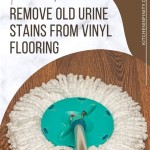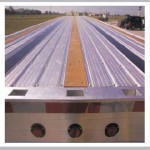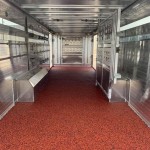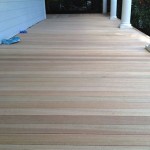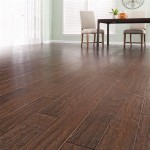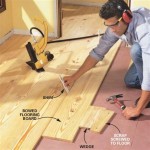Outdoor Rubber Flooring: Durability, Safety, and Versatility
Outdoor rubber flooring is a surfacing solution engineered for resilience, safety, and aesthetic appeal in a wide range of exterior environments. Its inherent properties make it a preferred choice for areas subjected to considerable wear and tear, exposure to the elements, and potential safety hazards. This article explores the characteristics, applications, benefits, and considerations associated with outdoor rubber flooring.
The composition of outdoor rubber flooring typically involves recycled or virgin rubber materials, often combined with binding agents and color pigments. Recycled rubber, derived from sources such as discarded tires, contributes to sustainable practices by diverting waste materials from landfills and promoting resource conservation. Virgin rubber offers specific performance characteristics, such as enhanced elasticity or UV resistance, depending on the intended application. The manufacturing process involves molding, vulcanizing, or other techniques to create durable and weather-resistant flooring products.
A variety of forms are available to suit diverse applications. Rubber tiles interlock for straightforward installation over existing surfaces such as concrete or asphalt. Offered in a multitude of sizes, thicknesses and colours, they provide a highly customisable solution. Poured-in-place rubber surfacing involves mixing rubber granules with a binder and applying the mixture directly onto the desired area, creating a seamless, custom-shaped surface. This option is particularly suited for playgrounds, recreational areas, and spaces with irregular shapes. Rubber mats provide a portable and versatile flooring option for temporary or semi-permanent installations. They are effective for creating anti-fatigue surfaces, protecting underlying surfaces, or defining specific areas.
Key Benefit 1: Superior Safety and Impact Absorption
One of the primary advantages of outdoor rubber flooring is its ability to enhance safety by mitigating the risk of injuries from falls and impacts. The inherent elasticity of rubber provides cushioning, reducing the force of impact upon contact. This shock-absorbing characteristic is particularly beneficial in areas frequented by children, such as playgrounds and recreational facilities. The critical fall height (CFH) rating of rubber flooring indicates the maximum height from which a fall is unlikely to result in a life-threatening head injury. This rating is a crucial consideration when selecting flooring for playground applications, ensuring compliance with safety standards and minimizing the potential for serious injuries.
The textured surface of many outdoor rubber flooring options enhances traction, reducing the risk of slips and falls, particularly in wet or icy conditions. This is particularly important in areas such as walkways, pool decks, and entryways, where pedestrians are exposed to potential slipping hazards. The improved grip provided by rubber flooring contributes to a safer environment for individuals of all ages and abilities.
Furthermore, rubber flooring can be designed to be compliant with accessibility standards, such as the Americans with Disabilities Act (ADA). By providing a firm, stable, and slip-resistant surface, rubber flooring can enhance accessibility for individuals using wheelchairs, walkers, or other mobility devices. This ensures that outdoor spaces are inclusive and accessible to all members of the community.
Key Benefit 2: Exceptional Durability and Weather Resistance
Outdoor rubber flooring is engineered to withstand the rigors of outdoor environments, including exposure to sunlight, temperature fluctuations, moisture, and heavy foot traffic. Its resistance to weathering, cracking, and fading ensures long-term performance and aesthetic appeal. The durability of rubber flooring reduces the need for frequent replacements, minimizing lifecycle costs and environmental impact.
UV resistance is a critical factor in the longevity of outdoor rubber flooring. Prolonged exposure to ultraviolet radiation can cause degradation and discoloration in some materials. Rubber flooring options with UV-resistant additives or coatings are designed to maintain their color and structural integrity over time, even in sunny climates. This ensures that the flooring retains its appearance and performance characteristics for years to come.
Rubber flooring is also resistant to moisture and chemicals, making it suitable for use in areas exposed to rain, snow, pool water, or cleaning agents. Its non-porous nature prevents water absorption, inhibiting the growth of mold, mildew, and bacteria. This is particularly important in areas such as pool decks, splash pads, and outdoor fitness areas, where hygiene and cleanliness are essential.
The inherent flexibility of rubber flooring allows it to accommodate minor surface irregularities and ground movement without cracking or buckling. This is advantageous in areas with uneven terrain or where soil settlement is a concern. The ability to conform to underlying surfaces ensures a stable and safe walking surface.
Key Benefit 3: Versatile Applications and Design Options
The versatility of outdoor rubber flooring extends to a wide range of applications, from playgrounds and recreational areas to patios and pool decks. Its adaptability to various shapes, sizes, and design requirements makes it a popular choice for both residential and commercial projects. The availability of a variety of colors, textures, and patterns allows for customization to complement the surrounding environment and architectural style.
Playgrounds are a common application for outdoor rubber flooring, providing a safe and cushioned surface for children to play on. Poured-in-place rubber surfacing is often used to create custom designs and integrate play equipment seamlessly. The ability to create different colors and patterns can enhance the visual appeal of the playground and create a stimulating environment for children.
Outdoor fitness areas, such as running tracks, weightlifting platforms, and yoga spaces, benefit from the shock-absorbing properties of rubber flooring. The cushioned surface reduces the impact on joints and muscles, minimizing the risk of injuries and enhancing comfort during workouts. Rubber flooring provides a durable and stable surface for various types of exercises and activities.
Pool decks and patios are another popular application for outdoor rubber flooring. Its slip-resistant surface and resistance to moisture make it a safe and comfortable choice for these areas. Rubber flooring can be used to create a seamless transition between indoor and outdoor spaces, enhancing the aesthetic appeal of the property.
Walkways, pathways, and entryways can also benefit from the safety and durability of outdoor rubber flooring. The slip-resistant surface reduces the risk of falls, while the weather-resistant properties ensure long-term performance. Rubber flooring can be used to create a visually appealing and functional surface for pedestrian traffic.
Furthermore, outdoor rubber flooring can be used for equestrian applications, such as horse stalls, riding arenas, and wash bays. Its shock-absorbing properties provide a comfortable and safe surface for horses, reducing the risk of injuries. The durability of rubber flooring ensures long-term performance even under heavy use.
Installation methods vary depending on the type of rubber flooring selected. Rubber tiles often feature interlocking edges, facilitating a straightforward installation process over a prepared sub-base. This method is suitable for both DIY projects and professional installations. Poured-in-place rubber requires specialized equipment and expertise. The mixture of rubber granules and binder is applied directly to the prepared surface and allowed to cure, creating a seamless and custom-shaped surface. Rubber mats are simply laid over the desired area, making them a portable and versatile flooring option.
Maintenance of outdoor rubber flooring is generally straightforward, involving regular sweeping or hosing to remove dirt and debris. Periodic cleaning with a mild detergent and water can help maintain the appearance and hygiene of the flooring. The frequency of cleaning will depend on the level of traffic and exposure to environmental elements. Proper maintenance will extend the lifespan of the flooring and ensure its continued performance.
While outdoor rubber flooring offers numerous benefits, some considerations are necessary. The initial cost of rubber flooring may be higher than some other surfacing options. However, the long-term durability and reduced maintenance requirements can offset the initial investment. The thickness of the flooring should be selected based on the intended application and the potential for impact. Thicker flooring provides greater shock absorption but may also be more expensive. The choice of color and texture should be carefully considered to complement the surrounding environment and meet aesthetic preferences. Darker colors may absorb more heat than lighter colors, while textured surfaces can enhance slip resistance.

Outdoor Rubber Flooring At Yapı

Rubber Outdoor Garden Flooring Tiles Soft Floor Sprung Gym

Rubber Outdoor Garden Flooring Tiles Soft Floor Sprung Gym

Outdoor Rubber Flooring Manufacturer Tiles

Best Outdoor Playground Rubber Mats Suppliers Flooring In Dubai

Outdoor Rubber Flooring At Rs 85 Square Feet रबर क फर श ट इल In Kadi Id 11346526873

Eco Sport 1 Inch Interlocking Rubber Flooring Tiles

Sbr Epdm Rubber Floor Tiles Outdoor For Playground Kindergarten China Walkway Tile And Garage Made In Com

Is Rubber Flooring Waterproof Roll Mat Tile Recommendations

How Do Interlocking Outdoor Tiles Work Sprung Gym Flooring
Related Posts

